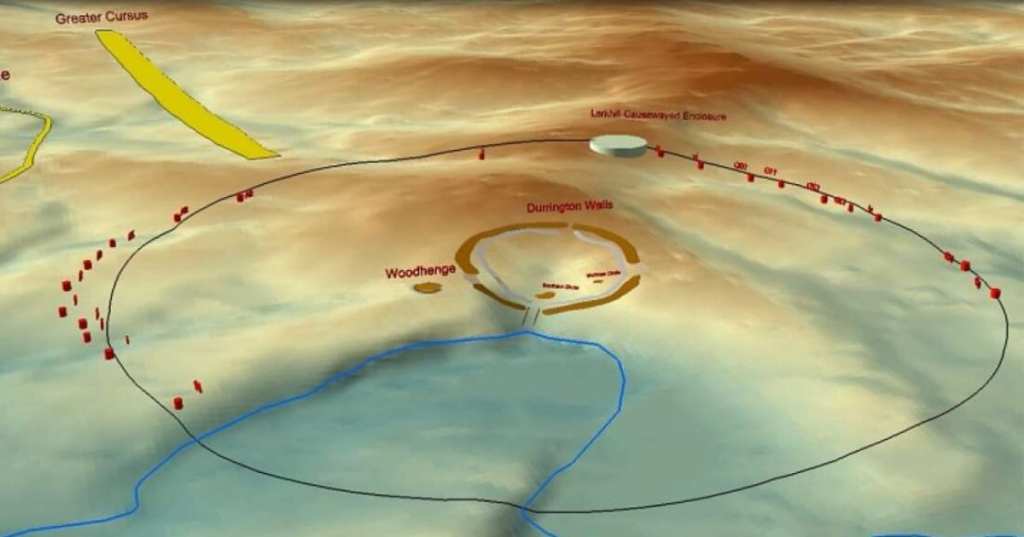Stonehenge has captivated the human imagination, pretty much since it was discovered. The site, in England, continues to draw thousands of visitors every year (and right now, they’re streaming the solstice live!), but recently, archaeologists have uncovered a new mystery just a hop, skip, and a jump away.
The newly identified structure hails from the same, Neolithic time period and, like Stonehenge, is believed to have held some cosmological significance to prehistoric peoples.
https://www.instagram.com/p/CBTaDKjnf1v/
Researchers from the University of Bradford wrote up the evidence of at least 20 prehistoric pits than run in a circle around the Durrington Walls henge. A henge, in general, refers to Neolithic banks of earth formed in a circular shape that typically contain a central feature (like Stonehenge).
The pits at the Durrington site have been noted before but have previously been assumed to be natural features. These archaeologists saw something different using geophysical surveys, noticing the distinct circular pattern that suggests they were human-made.
https://www.instagram.com/p/CBvGbK6Hg0J/
Radiocarbon dating shows the pits, which are over 33 feet in diameter and 16 feet deep, are around 4500 years old – around the same time that the Durrington Walls were constructed.
Their findings were reported in Internet Archaeology, with the scientists positing that the pits acted as a boundary for the henge. The size of the total structure suggests that the people living in the area at the time had a good grasp of numeracy, a tally system, and some need for structures that had a cosmological function.
Professor Vincent Gaffney, lead author and University of Bradford professor, talked with IFLScience about the discovery.
“The pits at Durrington seem to demarcate an area reserved for ritual activity with Durrington walls at its heart.
Stonehenge has a similar area defined by burial mounds and it may be that most people did not enter these areas, except for special occasions.
There is also a palisade [a defensive wall] on the interior of the circuit.”
There are still many unknowns, but now that it’s settled that the pits were put there on purpose, surely more research will follow that could provide valuable insights into Neolithic Britain.
https://www.instagram.com/p/95tHWaLFms/
“They really are appearing to deliberately lay out these pits at that space.
That says something about their cosmology, but try laying out a line nearly 900 metres without tape or theodolites.
You have to pace and if you pace over such a long distance then you need to be able to count and have a tally system – that’s a first in Britain.”
Stonehenge, the Durrington Wall, and now the Durrington Pits seem to suggest there was a thriving culture in the area at the time.
Historians, archaeologists, and ancient mystery nerds everywhere can’t wait to learn more.






